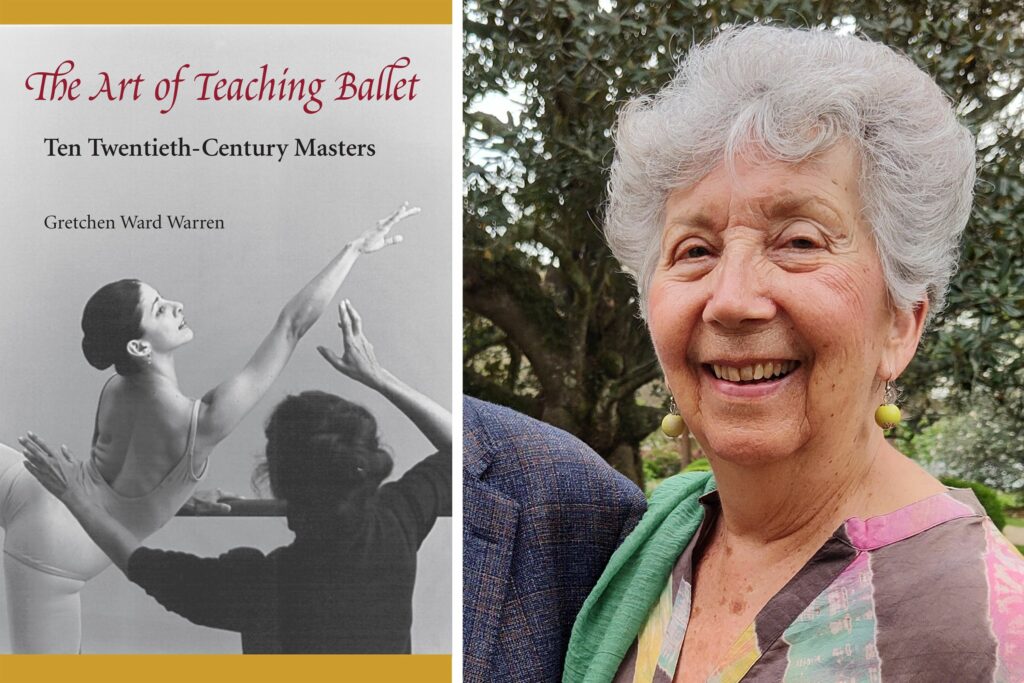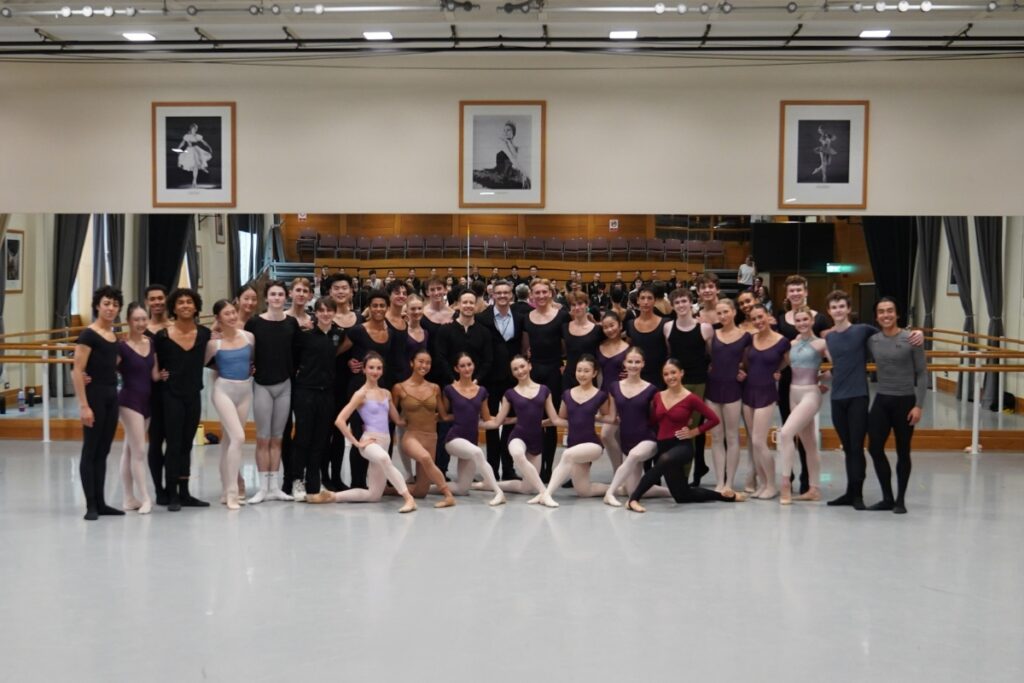In conversation with Gretchen Ward Warren – what makes a good ballet teacher?
We were thrilled to welcome Gretchen Ward Warren, an esteemed alumna and renowned ballet expert, to speak to our Diploma of Dance Teaching students. The author of two iconic ballet books with a new one just released, she shared her rich history and invaluable insights from her career.
Gretchen attended the School as a student from 1963-64 and participated in the first-ever teacher training course at the School, inaugurated by the School’s Founder Dame Ninette de Valois. Gretchen’s return to the School was a full circle moment, allowing her to impart wisdom gleaned from decades of experience to the next generation of ballet educators.
Early life and ballet beginnings
Growing up in New Jersey, Gretchen’s parents, both professors, encouraged academic pursuits. However, her passion for ballet led her down a different path. At 16, her father’s job took the family to Iceland, where she discovered the National Theatre School in Reykjavik. This experience was a pivotal moment in her ballet career.
I was lucky to be there, even though I wasn’t initially directed towards a professional ballet career. In Reykjavik, I could study ballet daily. It was my first exposure to British training, and it was excellent. By the end of the year, my classmates were going to The Royal Ballet School, and I joined them.
Training at The Royal Ballet School
Gretchen attended The Royal Ballet School, where she joined an advanced overseas class taught by Barbara Fewster. At that time, overseas students were separated from the British students, a policy that caused considerable concern among the international students. Despite this, the training Gretchen received was exceptional.
My memories of Barbara Fewster are vivid; she was a tough but effective teacher, and I credit her for my advanced technique. We had to perform a series of entrechats every day after class, and she would demonstrate in her character shoes with slightly flexed feet, which impressed us all.
Two significant events marked her time at The Royal Ballet School. First, she joined Ninette de Valois’s inaugural teacher training course, The Royal Ballet School Craftsman’s Course for the Teaching of Ballet, a formative experience that fuelled her passion for teaching.
The teacher training course led by Ninette de Valois was a fascinating experience. Although it wasn’t as organised as it is now, it laid the foundation for my teaching career.
Second, her class participated in several opera productions at The Royal Opera House in Covent Garden, a grand and overwhelming experience that left a lasting impression.
The advanced overseas class had the unique opportunity to appear in operas including Aida and Rigoletto at The Royal Opera House Coming from a small town in America, I was completely overwhelmed by the grandeur of the stage and the production.
Professional career and teaching
Upon returning to the United States, Gretchen joined the Pennsylvania Ballet in Philadelphia. It was here that she began teaching adult beginner classes and was introduced to the Vaganova syllabus.
I started incorporating the Vaganova teaching style into my adult beginner class, and almost immediately, I noticed a difference in my students. I loved the way they taught the progression, for instance, of something like assemblé.
They really break every step down, and they still do. The syllabus is phenomenal in its accomplishing that. I’m not talking about style here. I didn’t teach a Russian style, but I did teach the academic progression through years one, two, three, and four.
After retiring as a dancer, she was invited to become ballet mistress of American Ballet Theatre II in New York, where she taught for five years. In 1983 Gretchen moved to Florida to accept a position as a Professor of Dance at the University of South Florida, where she taught for 27 years.
Writing her book
Gretchen wrote Classical Ballet Technique in 1989, just six years after joining the University of South Florida. The book is a guide for students, teachers, and lovers of ballet, covering ballet vocabulary and advice for aspiring dancers.
Seven years later, Gretchen published The Art of Teaching Ballet: Ten Twentieth-Century Masters, in which she interviewed ballet teachers from around the world. With 25 years of teaching and observing other teachers under her belt, she compiled all her notes and also conducted interviews with ballet teachers worldwide about their teaching methods.
I’d been teaching when I wrote this book since I was 20. You get to a point where you get really bored of yourself, and the way I had to learn to teach was to go into the classes of teachers that I loved and write things down.
I thought I would like to go around the world and sit in the classroom of several great teachers and look at their classes, analyse them, and pick their brains about teaching.
Her book highlights the charisma and personality of great teachers, emphasizing that different teaching methods can all contribute to student success.
Teaching philosophy
Gretchen shared her teaching philosophy, stressing the importance of repetition, creativity, and clarity in feedback.
In teaching, repetition is crucial, but it doesn’t have to be boring. You can keep it interesting by incorporating different elements and improvisation. Corrections should be given after the exercise, not during, to allow students to concentrate fully.
Advice for aspiring teachers
Gretchen offered invaluable advice to the aspiring teachers in the room.
Teaching is incredibly rewarding. For me, it’s been more fulfilling than my dancing career ever was. It’s about sharing knowledge and passion. You must have humility, curiosity, musicality, a sense of humour, and above all, enthusiasm. You must know your subject deeply and adapt as the art form evolves.
Gretchen’s journey from a passionate student to a seasoned teacher and author is a testament to the power of dedication and adaptability in the world of ballet.
Her insights inspired and equipped our teachers-in-training with new perspectives on their teaching careers.
Check out her latest release, Hollow Bone, A Naive Wanderer’s Journey from Outback to Opening Night, a memoir detailing her journey as a Fullbright Fellow to Australia in search of Aboriginal dance and culture, and its connection to Native Americans.





